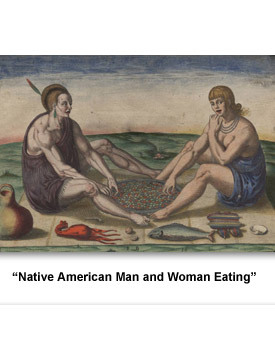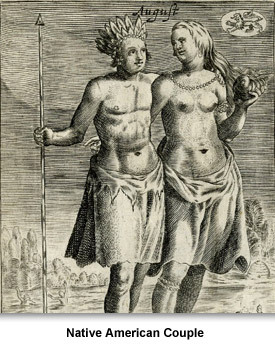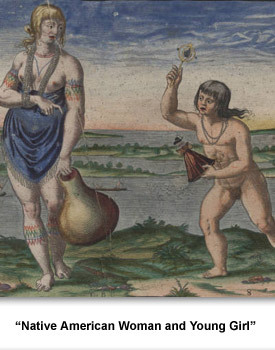Indians & Cultural Encounters
Kinship
Family through clans was the most important feature in Indian life in Tennessee and other parts of the Southeast.
Indian tribes were divided into several clans. These clans acted as a person’s family. Clan members shared property, determined who could marry who, and even determined what work people did. Among the Cherokees, for instance, people in the Blue Clan were often builders, while the men of the Wolf Clan were warriors.
These clans were also Matrilineal. “ Matrilineal ” means that a person belonged to his or her mother’s clan. He would trace his family relationships through his mother’s family. Dig Deeper: How is this different from today?
Children were raised by their mother and her sisters. They even sometimes called their aunts by the name mother. Their mother’s oldest brother (the child’s uncle) often treated the child the same way a father would. He would discipline the child. He also taught the child the skills he or she would need in life. Older children were also expected to watch out for their younger brothers and sisters.
Cherokees did not allow children to marry within their clan. When a daughter married, her new husband would move in with her. A son would go live with his wife’s family. All the female members of a family along with their husbands and children would live in a single household.
Clans were comprised of a number of different families. The household might own several houses that would be connected around a common area used for work.
Picture Credits:
- Print entitled, “Native American Woman and Young Girl.” The scene shows a woman and a young girl standing in front of a coastal scene. The woman is wearing a cloth skirt and holding a large gourd, while the girl waves a rattle in her right hand and holds a toy in her left. Originally drawn by John Whyte this picture was included in the book A Briefe and True Report of the New Found Land of Virginia by Thomas Hariot. Later the image was engraved by Theodor de Bry and reprinted in 1590. De Bry wanted to make Native Americans look more like Europeans, so he drew them with blonde hair and white skin. Although the drawing is not entirely accurate, it demonstrates how some Europeans did not understand or appreciate the ways in which Native Americans were different from them. The Indians pictured belong to the Southern Algonquian group of Indians and are related to the Shawnee. North Carolina Collection, University of North Carolina
- Print of a Native American couple holding a lance and a shell. The print was created by Robert Vaughan and originally published in The XII Mounthes of the Yeare in Habits of Severall Natiosn or The 12 Months of the Year in Habits of Several Nations by Thomas Booth in 1621. Trustees of the British Museum.
- Print entitled, “Native American Man and Woman Eating.” The scene shows a man and a woman sitting with a plate of food between them. Foods such as fish, nuts, and corn are shown in the foreground. Originally drawn by John Whyte this picture was included in the book A Briefe and True Report of the New Found Land of Virginia by Thomas Hariot. Later the image was engraved by Theodor de Bry and reprinted in 1590. De Bry wanted to make Native Americans look more like Europeans, so he drew them with blonde hair and white skin. Although the drawing is not entirely accurate, it demonstrates how some Europeans did not understand or appreciate the ways in which Native Americans were different from them. The Indians pictured belong to the Southern Algonquian group of Indians and are related to the Shawnee. North Carolina Collection, University of North Carolina
Indians & Cultural Encounters >> Indian Life >> How They Lived >> Kinship



 Sponsored by: National Endowment for the Humanities
Sponsored by: National Endowment for the Humanities